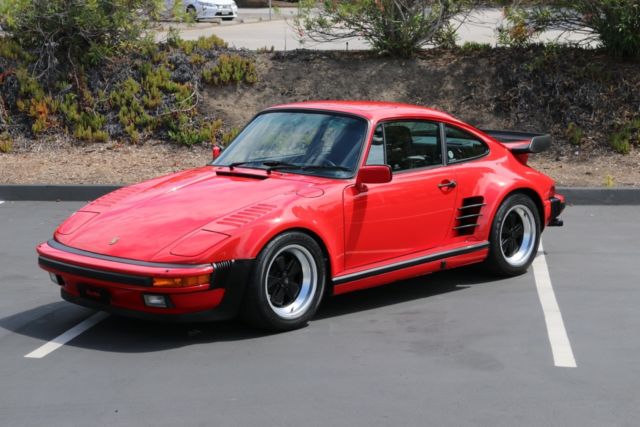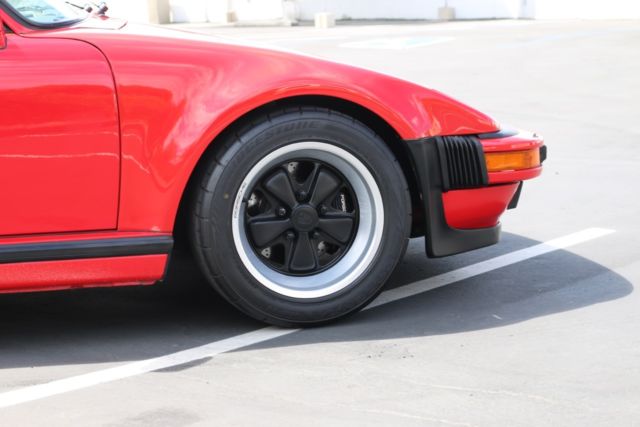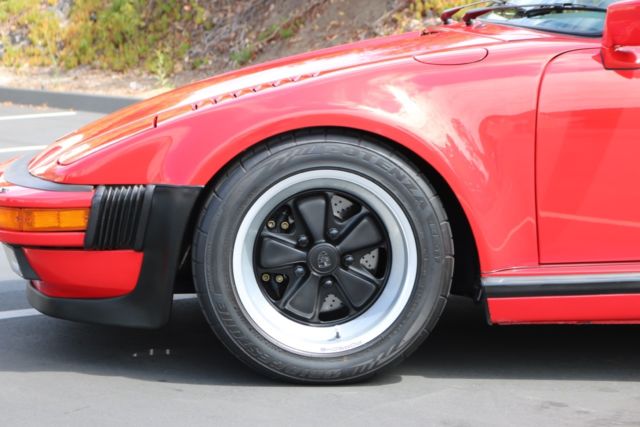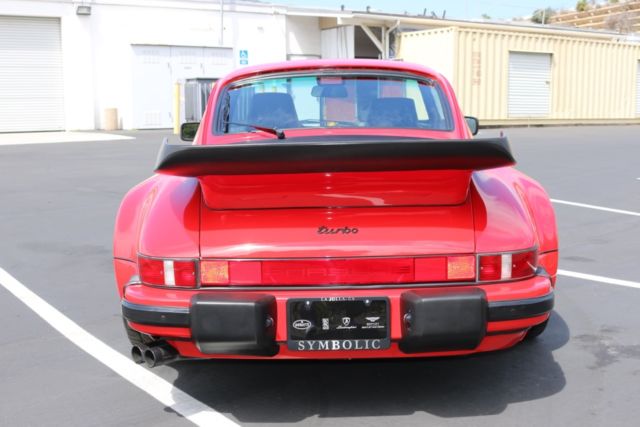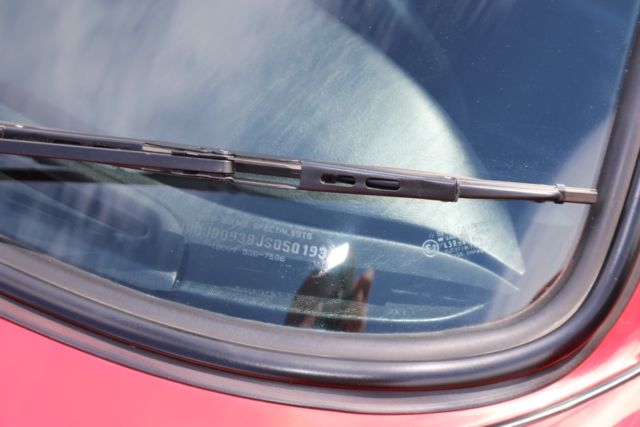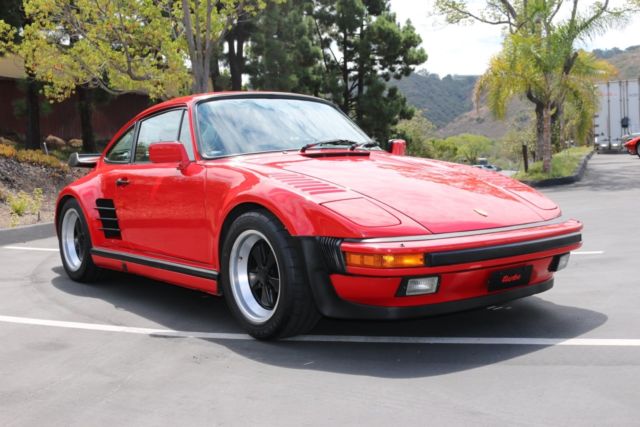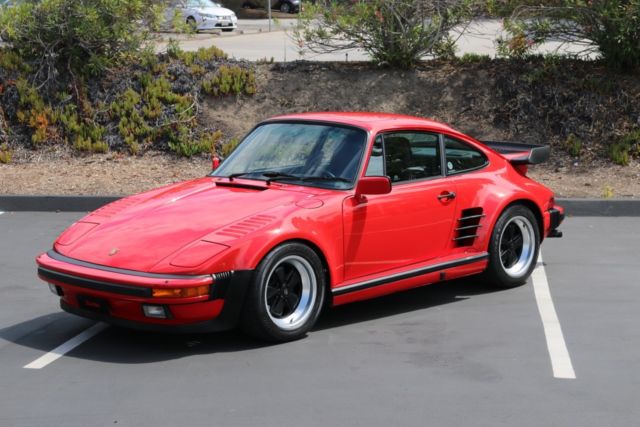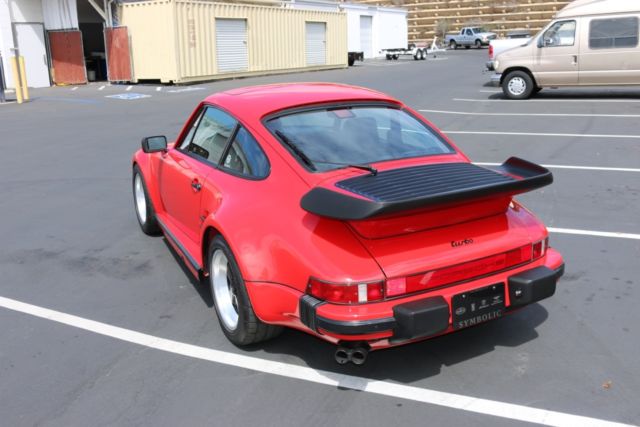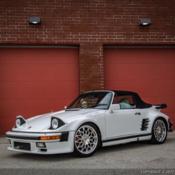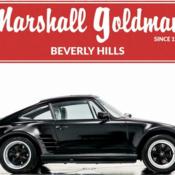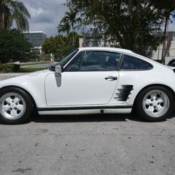1988 Porsche 930 Turbo Factory Slantnose
| Condition: | Used |
| Make: | Porsche |
| Model: | 930 |
| Trim: | Coupe |
| Year: | 1988 |
| Mileage: | 37,179 |
| VIN: | WP0JB0938JS050193 |
| Color: | Guards Red |
| Fuel: | Gasoline |
| Transmission: | Manual |
| Drive type: | RWD |
| Interior color: | Black |
| Vehicle Title: | Clear |
| Item location: | San Diego, California, United States |
| Extras |
| Listed by | Private seller |
Description of 1988 Porsche 930 |
|
Porsche began experimenting with turbocharging technology on their race cars during the late 1960s, nd in 1972 began development on a turbocharged version of the 911. Porsche originally needed to produce the car in order to comply with homologation regulations and had intended on marketing it as a street legal race vehicle like the 1973 Carrera 2.7 RS. The FIA's Appendix "J"rules that brought about the 911 Turbo Carrera RSR 2.1 in 1974 changed in 1975 and 1976. The FIA announced that cars for Group 4 and Group 5 had to look like production cars and would be for "Normal Sale"with a means the distribution of cars to individual purchasers through normal channels of the manufacture. For the 1976 season, ew FIA regulations required manufactures to produce 400 cars in twenty-four months to gain approval for Group 4. Group 5 would require the car to be derived from a homologated model in Group 3 or 4. To win the Group 5 Championship, Porsche would first have to have a car that could compete in Group 4 which led to the 934. For Group 5, orsche would create one of the most successful racing cars of all time, he 935. While the original purpose of the Porsche Turbo was to gain homologation for the 1976 racing season, he marketing department soon awoke to the potential of this ultra high-performing machine when the original target of 400 cars was passed by the end of 1975. Since Porsche wanted to be racing for the 1976 season, hey gained FIA homologation for the Porsche Turbo for Group 4 in Nr. 645 on 6 Dec ‘75 after they certified that 400 identical production cars had been completed. The 1,000th 1976 Turbo was completed on 5 May ‘76 and this production number allowed Porsche reclassify the Turbo for Group 3, eries-production grand touring car in FIA Homologation Nr. 3076, Jan ‘77. Additional variants to Group 4 (and Group 5) were promulgated in Nr. 3076 and included the 1977 model year (chassis nr. 9307700001, Jan ‘77) and the 3.3 liter Turbo (chassis nr. 9308700001, Jan ‘78). FIA Nr. 3076 remained in effect until replaced by FIA B-208 in 1 Mar 1982 for Group A/B when the homologation designation was changed from "Porsche Turbo"to "911 Turbo" . Ferdinand "Ferry"Porsche, ho was running the company at the time, handed development of the vehicle over to Ernst Fuhrmann, ho adapted the turbo-technology originally developed for the 917/30 CAN-AM car to the 3.0 litre flat-six from the Carrera RS 3.0, reating what Porsche internally dubbed as 930. Total output from the engine was 260 PS (191 kW; 256 hp), uch more than the standard Carrera. In order to ensure that the platform could make the most of the higher power output, revised suspension, arger brakes and stronger gearbox became part of the package, lthough some consumers were unhappy with Porsche's use of a 4-speed whilst a 5-speed manual was available in the "lesser"Carrera. A "whale tail"rear spoiler was installed to help vent more air to the engine and help create more downforce at the rear of the vehicle, nd wider rear wheels with upgraded tires combined with flared wheelarches were added to increase the 911's width and grip, aking it more stable. Early US-spec 930 — note The 930 proved very fast but also very demanding, rone by its short wheelbase and rear engine layout to oversteer and plagued by significant turbo-lag. Porsche made its first and most significant upgrades to the 930 for 1978, nlarging the engine to 3.3 litres and adding an air-to-air intercooler. By cooling the pressurized air charge, he intercooler helped increase power output to 300 hp (DIN); the rear ‘whale tail' spoiler was re-profiled and raised slightly to make room for the intercooler. Porsche also upgraded the brakes to units similar to those used on the 917 racecar. Changing emissions regulations in Japan and the U.S. forced Porsche to withdraw the 930 from those markets in 1980. It remained, owever, available in Canada. Believing the luxurious 928 gran turismo would eventually replace the 911 as the top of the Porsche line, uhrmann cut-back spending on the model, nd it was not until Fuhrmann's resignation the company finally committed the financing to re-regulate the car. The 930 remained available in Europe, nd for 1983 a 330 PS (243 kW; 325 hp) performance option became available on a build-to-order basis from Porsche. With the add-on came a 4-pipe exhaust system and an additional oil-cooler requiring a remodelled front spoiler and units bearing the add-on often featured additional ventilation holes in the rear fenders and modified rockers. A 1982 Porsche 911 SC modified to the Flachbau (" slantnose" ) appearance. It was in 1984 that Porsche produced the fastest of the 930 Turbos with exhilarating pace 0-60 4.6 s with a top speed of 278 km/h. These are the cars in greatest demand. By the 1985 model year, 28 sales had risen slightly, ut question remained whether it would supersede the 911 as the company's premier model. Porsche re-introduced the 930 to the Japanese and U.S. markets in 1986 with an emission-controlled engine producing 282 PS (207 kW; 278 hp). At the same time Porsche introduced Targa and Cabriolet variants, both of which proved popular. Porsche discontinued the 930 after model year 1989 when its underlying "G-Series"platform was being replaced by the 964. '89 models were the first and last versions of the 930 to feature the G50 transmission, 5-speed manual transmission. A turbo version of the 964 officially succeeded the 930 in 1991 with a modified version of the same 3.3 liter flat-6 engine and a 5-speed transmission. This Car: VIN: WPOJB0938JS050193 This a a very proper example of the factory slantnose coupe. Finished in Guards red over black. It is a multiple PCA award winner and in near like new condition. Please call Chris Peterson at 858-752-1114 or email chris@symbolicinternational.com for more information. |
 Home
Home Contact us
Contact us NEWEST CARS
NEWEST CARS SELL YOUR CAR
SELL YOUR CAR FAQ
FAQ